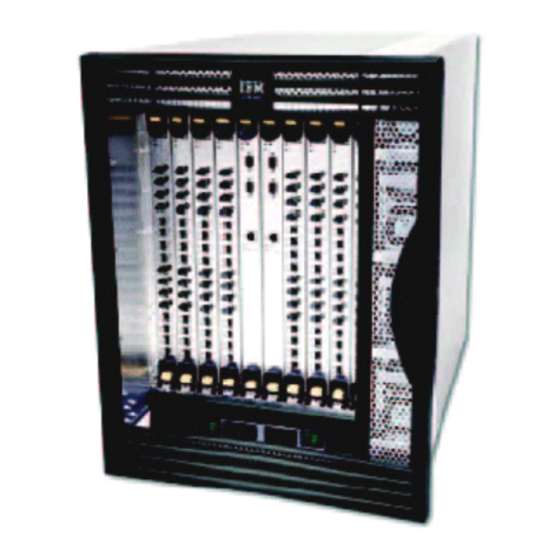
IBM TotalStorage NAS Gateway 500 Manuals
Manuals and User Guides for IBM TotalStorage NAS Gateway 500. We have 2 IBM TotalStorage NAS Gateway 500 manuals available for free PDF download: Service Manual, Administrator's Manual
IBM TotalStorage NAS Gateway 500 Administrator's Manual (358 pages)
Table of Contents
-
Figures
13 -
Tables
15 -
-
Publications17
-
-
-
-
-
Adding a Group125
-
Removing a Group125
-
-
-
-
-
-
-
-
Ftp147
-
Http148
-
-
Starting PC NFS158
-
Stopping PC NFS159
-
-
CIFS Concepts160
-
CIFS Basic Setup162
-
-
-
-
-
-
-
Listing Mirrors198
-
-
-
-
-
-
Welcome Screen238
-
-
-
Before You Begin266
-
-
-
Managing Devices295
-
-
Site Failure317
-
Site Isolation318
-
Data Divergence319
-
Disk Failure319
-
Node Failure319
-
-
Trademarks336
-
-
Glossary
337 -
Index
349
Advertisement
IBM TotalStorage NAS Gateway 500 Service Manual (471 pages)
Table of Contents
-
-
Publications11
-
-
-
System Leds56
-
-
Entry MAP59
-
-
-
SPCN Error Codes149
-
-
Main Menu277
-
-
Bring-Up Phase312
-
-
-
Procedure List329
-
Service Cover334
-
Bezel335
-
-
PCI-X Adapters344
-
-
Disk Drives359
-
Processor Book363
-
Dimms366
-
DIMM Removal366
-
DIMM Insertion367
-
Battery368
-
Power Supplies371
-
PCI Riser Card374
-
Operator Panel382
-
-
-
System Parts394
-
Power Cable401
-
-
Glossary
451-
-
Index461
-
-
Advertisement
Related Products
- IBM TS7650G PROTECTIER DEDUPLICATION GATEWAY
- IBM System Storage TS7600 ProtecTIER Series
- IBM TotalStorage DS8000
- IBM TotalStorageFAStT900
- IBM TotalStorage NAS Gateway 300
- IBM totalstorage 200
- IBM totalstorage 225
- IBM TotalStorage SAN Volume Controller
- IBM TotalStorage DS4700
- IBM TotalStorage Enterprise 3590

